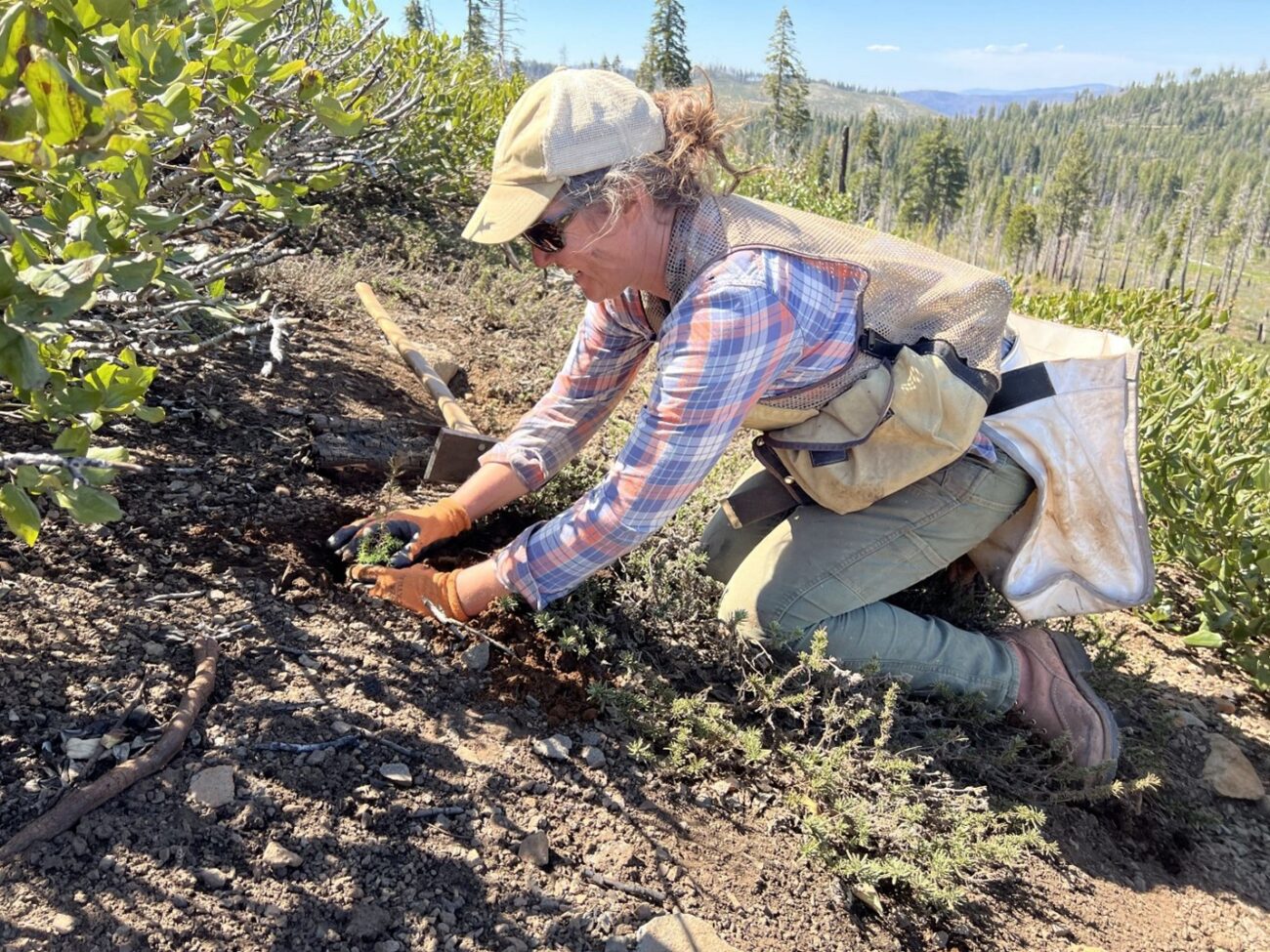Good Neighbor Authority between Plumas National Forest & SNC expedited restoration work

Reforestation efforts have finally taken root in the Moonlight Fire burn area in the Plumas National Forest.
The Moonlight Fire Area Restoration Project, which will complete watershed and forest health restoration activities on nearly 15,000 acres, including hazard tree removal, aspen stand enhancements, erosion control, brush removal, road maintenance, wildlife-habitat improvements, and the replanting of conifer seedlings on more than 4,100 acres, is nearly complete.
“This project is building on over 10 years of restoration efforts and while initial planning constrained some of the restoration work, overall, many of our planting units have the real potential to grow healthy, mature trees,” said Michael Hall, district manager with the Feather River Resource Conservation District.

Good Neighbor Authority leads to project
The Moonlight Fire occurred in Plumas County in 2007. Initial restoration efforts had begun, but a Good Neighbor Authority in 2019 allowed the Plumas National Forest to obligate more than $7 million in fire-settlement funds to the Sierra Nevada Conservancy (SNC) and advance work more strategically. Those funds were then awarded to the Feather River Resource Conservation District so the work could be implemented and completed.
A Good Neighbor Authority allows federal entities, such as the Forest Service and the Bureau of Land Management, to authorize states, counties, and federally recognized Native American tribes to conduct certain projects on federal lands in pursuit of specified land-management goals. A Good Neighbor Authority can be a very valuable tool in places like the SNC’s Region, where more than 60 percent of the land is managed by the federal government.
“The federal government is often large and cumbersome with implementation taking more time than is ideal for projects to move forward,” said Hall. “This authority moved money to a more nimble state agency, who then allocated the money to a partner who is able to implement the much-needed work.”
Reforestation critical in a changing climate
Trees are essential to life on earth. From carbon sequestration to clean air and wildlife habitat, healthy forests are vital. Reforestation is a powerful nature-based solution that restores forest health and biodiversity while enhancing climate resilience. It is also an economic lifeline for many rural communities throughout the Sierra-Cascade, supporting recreation and timber industries that depend on healthy, functioning landscapes.
As high-severity wildfires increase throughout California, getting organizations to collaboratively conduct post-fire forest restoration is essential . According to Hall, replanting was always the hope in the Plumas National Forest after the Moonlight Fire burned 37,000 acres at such a high severity nearly every tree was killed.

“Reforestation matters more than ever because wildfire severity is so much higher today,” he said. “Wildfires that result in so much tree mortality and all potential seed sources wiped out means the area is likely to be converted to a shrubby-chaparral ecosystem. What we’re seeing is huge patches of land in the Sierra losing most of their tree cover and these areas are unlikely to convert back to forests without human intervention.”
Some of those trees killed in the area were rare Baker cypress. Known to grow only in southern Oregon and northern California, many of these trees thriving in the Mud Lake Resource Natural Area were gravely impacted. While not included in the original scope of work, registered foresters and their teams of volunteers were able to add this rare species to the reforestation plan.
Reforestation is more than planting trees—it’s a strategic nature-based solution that restores biodiversity, improves watershed health, stabilizes soils, and will help reestablish the Sierra-Cascade’s roles as a long-term carbon sink. Projects like this exemplify how the SNC and partners’ work contribute to California’s nature-based climate targets while supporting ecological recovery.
Conifer seedling monitoring will continue
Despite being delayed and hampered by two fires that burned through portions of the project area, the Walker Fire in 2019 and the Dixie Fire in 2021, they were able to plant seedlings across nearly 4,200 acres in total. There is only about 60 acres of mastication and hazardous tree thinning left, along with some more aspen grove improvements. Partners will also continue to monitor the success of their replanting efforts going forward.
While the road was long and arduous, many sections of the high-severity burned landscape that are currently chapparal-shrubland have a great chance of turning back into a multi-beneficial mixed-conifer forest thanks to the hard work and collaborative efforts of all those involved.
“I think it is valuable to recognize the importance of federal, state, and local partnerships, especially having a local county or watershed group get involved. Involving the Feather River Resource Conservation District was one of the main reasons so many local contractors could be utilized. The quality of work is superior when operators working on the project are connected with the landscape,” said Hall.
